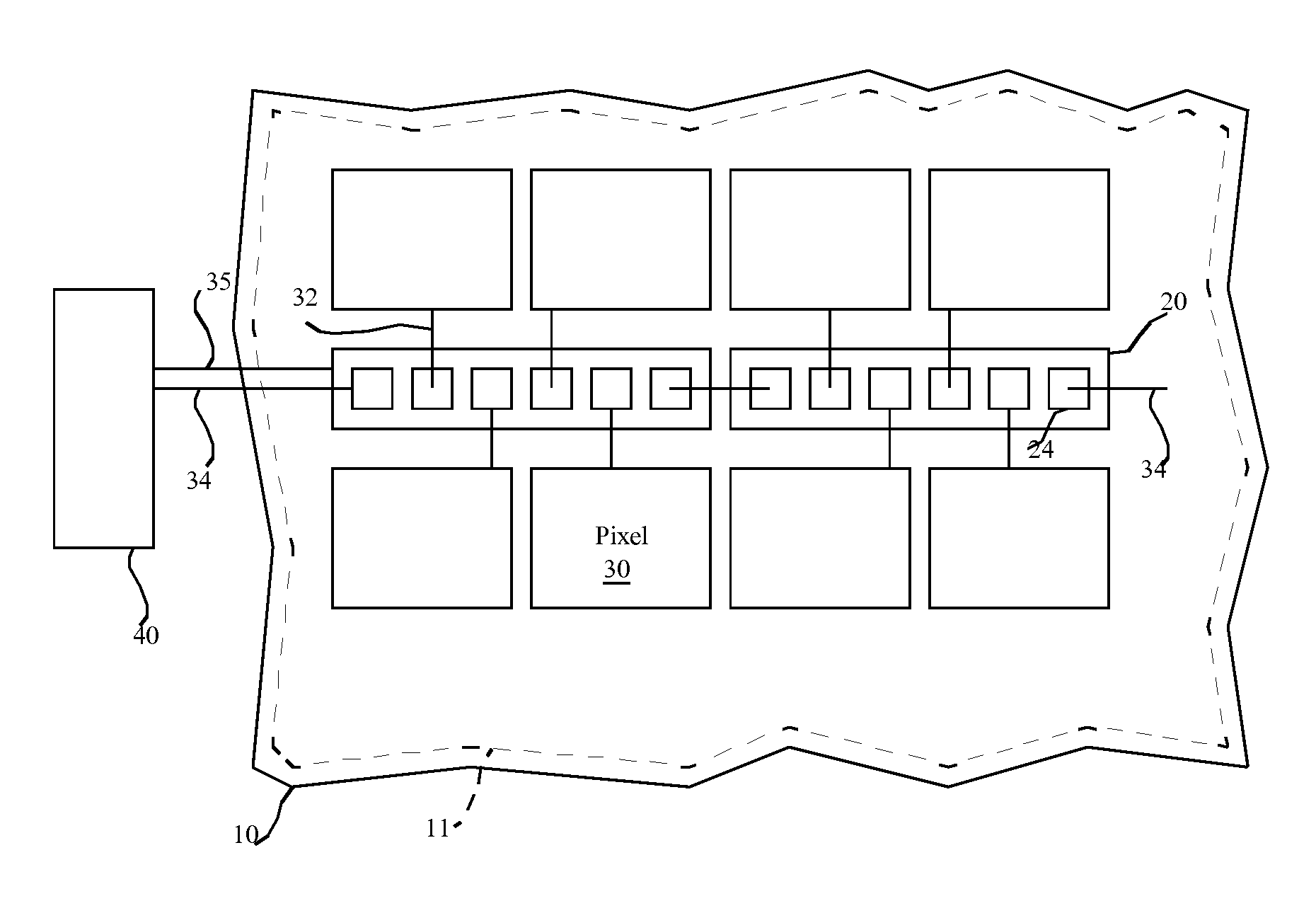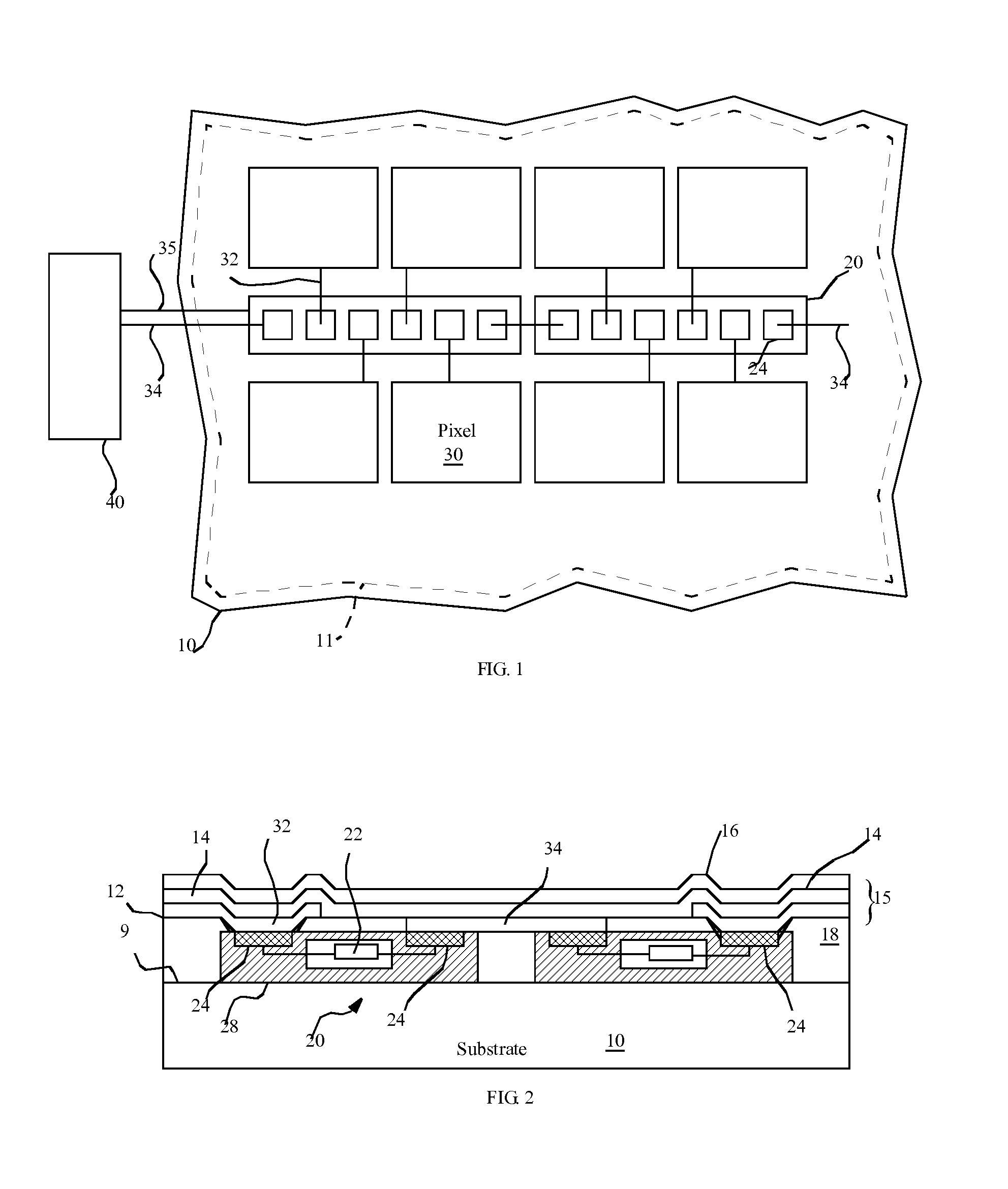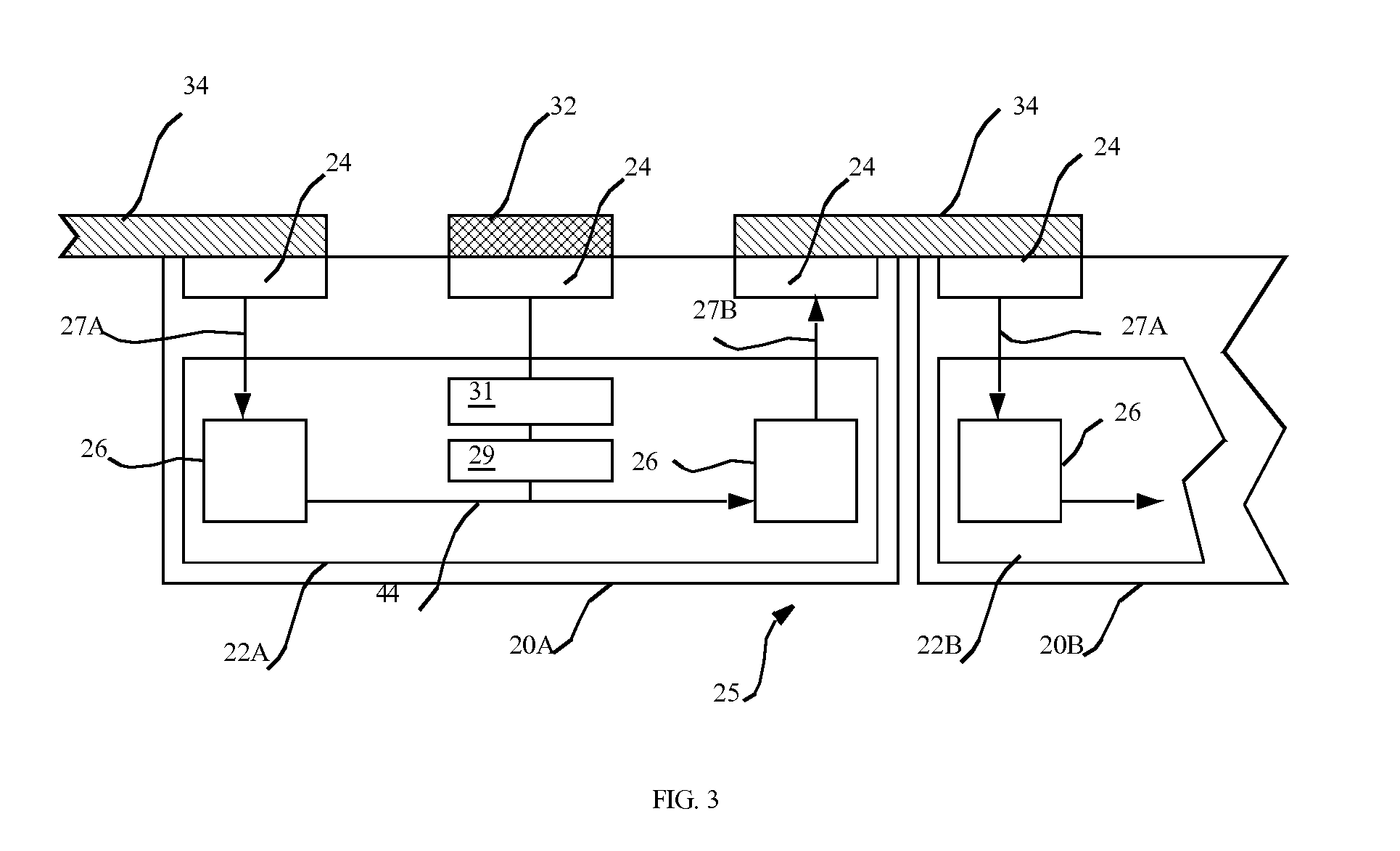Chiplet display device with serial control
a display device and serial control technology, applied in static indicating devices, instruments, electroluminescent light sources, etc., can solve the problems of limited number of rows (or columns) of passive matrix drive devices, limited number of passive matrix devices, and limited number of rows (or columns). achieve the effect of digital control, image quality, and high-performance pixel circuits
- Summary
- Abstract
- Description
- Claims
- Application Information
AI Technical Summary
Benefits of technology
Problems solved by technology
Method used
Image
Examples
Embodiment Construction
[0032]Referring to FIGS. 1 and 2, in one embodiment of the present invention, a digital display device and system includes a display substrate 10 having a display area 11 on a process side 9 of the display substrate 10. An array of pixels 30 is formed on the display substrate 10 process side 9 in the display area 11, each pixel 30 including a first electrode 12, one or more layers 14 of light-emitting material located over the first electrode 12, and a second electrode 16 located over the one or more layers 14 of light-emitting material, wherein the pixels 30 emit light in response to a current provided by the first and second electrodes 12, 16 through the one or more layers of light-emitting material 14. The layers 12, 14 and 16 define a pixel 30, for example an organic light-emitting diode 15, in the areas where all three layers 12, 14, 16 overlap and current can flow through the one or more layers 14 of light-emitting material from the electrodes 12, 16.
[0033]A plurality of chipl...
PUM
 Login to View More
Login to View More Abstract
Description
Claims
Application Information
 Login to View More
Login to View More - R&D
- Intellectual Property
- Life Sciences
- Materials
- Tech Scout
- Unparalleled Data Quality
- Higher Quality Content
- 60% Fewer Hallucinations
Browse by: Latest US Patents, China's latest patents, Technical Efficacy Thesaurus, Application Domain, Technology Topic, Popular Technical Reports.
© 2025 PatSnap. All rights reserved.Legal|Privacy policy|Modern Slavery Act Transparency Statement|Sitemap|About US| Contact US: help@patsnap.com



